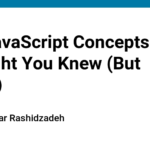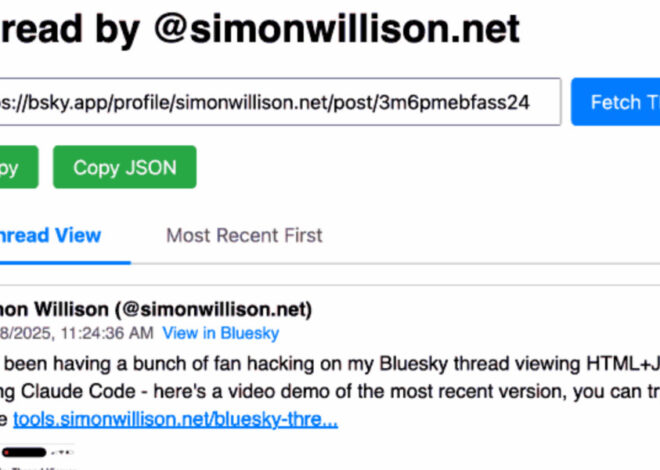
The Conservatives On The Supreme Court Are So Scared Of Nudity, They’ll Throw Out The First Amendment
from the seems-bad dept
The Supreme Court this morning took a chainsaw to the First Amendment on the internet, and the impact is going to be felt for decades going forward. In the FSC v. Paxton case, the Court upheld the very problematic 5th Circuit ruling that age verification online is acceptable under the First Amendment, despite multiple earlier Supreme Court rulings that said the opposite.
Justice Thomas wrote the 6-3 majority opinion, with Justice Kagan writing the dissent (joined by Sotomayor and Jackson). The practical effect: states can now force websites to collect government IDs from anyone wanting to view adult content, creating a massive chilling effect on protected speech and opening the door to much broader online speech restrictions.
Thomas accomplished this by pulling off some remarkable doctrinal sleight of hand. He ignored the Court’s own precedents in Ashcroft v. ACLU by pretending online age verification is just like checking ID at a brick-and-mortar store (it’s not), applied a weaker “intermediate scrutiny” standard instead of the “strict scrutiny” that content-based speech restrictions normally require, and—most audaciously—invented an entirely new category of “partially protected” speech that conveniently removes First Amendment protections exactly when the government wants to burden them. As Justice Kagan’s scathing dissent makes clear, this is constitutional law by result-oriented reasoning, not principled analysis.
As we’ve noted, in cases like Ashcroft v. ACLU and Brown v. EMA, the Supreme Court had long established that states couldn’t just throw around vague claims of “harmful to minors” to ignore the First Amendment, or at the very least to lower the standard of scrutiny from “strict scrutiny” to “intermediate scrutiny” (though not, as Ken Paxton hoped, all the way down to “rational basis.”).
The real danger here isn’t just Texas’s age verification law—it’s that Thomas has handed every state legislature a roadmap for circumventing the First Amendment online. His reasoning that “the internet has changed” and that intermediate scrutiny suffices for content-based restrictions will be cited in countless future cases targeting online speech. Expect age verification requirements to be attempted for social media platforms (protecting kids from “harmful” political content), for news sites (preventing minors from accessing “disturbing” coverage), and for any online speech that makes moral authorities uncomfortable.
And yes, to be clear, the majority opinion seeks to limit this just to content deemed “obscene” to avoid such problems, but it’s written so broadly as to at least open up challenges along these lines.
Thomas’s invention of “partially protected” speech, that somehow means you can burden those for which it is protected, is particularly insidious because it’s infinitely expandable. Any time the government wants to burden speech, it can simply argue that the burden is built into the right itself—making First Amendment protection vanish exactly when it’s needed most. This isn’t constitutional interpretation; it’s constitutional gerrymandering.
The conservative justices may think they’re just protecting children from pornography, but they’ve actually written a permission slip for the regulatory state to try to control online expression. The internet that emerges from this decision will look much more like the one authoritarian governments prefer: where every click requires identification, where any viewpoint can be age-gated, and where anonymity becomes a luxury only the powerful can afford. Thomas’s “starch” in constitutional standards? It just got bleached out of existence.
Texas, like many States, prohibits the distribution of sexually explicit content to children. Tex. Penal Code Ann. §43.24(b) (West 2016). But, although that prohibition may be effective against brick-and-mortar stores, it has proved challenging to enforce against online content. In an effort to address this problem, Texas enacted H. B. 1181, Tex. Civ. Prac. & Rem. Code Ann. §129B.001 et seq. (West Cum. Supp. 2024), which requires certain commercial websites that publish sexually explicit content to verify the ages of their visitors. This requirement furthers the lawful end of preventing children from accessing sexually explicit content. But, it also burdens adult visitors of these websites, who all agree have a First Amendment right to access at least some of the content that the websites publish. We granted certiorari to decide whether these burdens likely render H. B. 1181 unconstitutional under the Free Speech Clause of the First Amendment. We hold that they do not. The power to require age verification is within a State’s authority to prevent children from accessing sexually explicit content. H. B. 1181 is a constitutionally permissible exercise of that authority.
There’s a lot of throat clearing in the majority opinion regarding the government’s power to block access to “obscene” material, and where it can limit access by children to sexually explicit material. That’s well-worn territory. The issue here is that with online age verification you have some very significant problems—which the Supreme Court used to recognize: the burden on adults of having to prove their age (and relinquish significant privacy in doing so) as well as the fact that the tech sucks and frequently gets stuff wrong.
But Thomas seems to act as though this is a simple extension of laws that prohibit stores from selling adult magazines to kids.
Obscenity is no exception to the widespread practice of requiring proof of age to exercise age-restricted rights. The New York statute upheld in Ginsberg required age verification: It permitted a seller who sold sexual material to a minor to raise “‘honest mistake’” as to age as an affirmative defense, but only if the seller had made “‘a reasonable bona fide attempt to ascertain the true age of [the] minor.’” 390 U. S., at 644. Most States to this day also require age verification for in-person purchases of sexual material. And, petitioners concede that an in-person age verification requirement is a “traditional sort of law” that is “almost surely” constitutional. Tr. of Oral Arg. 17.
The facts of Ginsberg illustrate why age verification, as a practical matter, is necessary for an effective prohibition on minors accessing age-inappropriate sexual content. The statute in that case prohibited the knowing sale of sexual content to a minor under the age of 17. 390 U. S., at 633. The defendant was convicted of knowingly selling a pornographic magazine to a 16-year-old. Id., at 631. But, most of the time, it is almost impossible to distinguish a 16-yearold from a 17-year-old by sight alone. Thus, had the seller in Ginsberg not had an obligation to verify the age of the purchaser, he likely could have avoided liability simply by asserting ignorance as to the purchaser’s age. Only an age-verification requirement can ensure compliance with an age-based restriction.
Thomas then claims that “The need for age verification online is even greater” and even cites Brown v. EMA (which found California’s law preventing the sale of violent video games unconstitutional) to somehow… support the argument here?
Thomas then falsely claims that the law does not regulate the speech of adults, which clearly goes against the opinion in Ashcroft.
Because H. B. 1181 simply requires proof of age to access content that is obscene to minors, it does not directly regulate the protected speech of adults…. On its face, the statute regulates only speech that is obscene to minors. That speech is unprotected to the extent the State seeks only to verify age. And, the statute can easily “be justified without reference to the [protected] content of the regulated speech,” because its apparent purpose is simply to prevent minors, who have no First Amendment right to access speech that is obscene to them, from doing so.
That’s legal fiction dressed up as statutory interpretation. Age verification requirements absolutely burden adult access to protected speech—that’s the entire point of challenging them.
The majority admits that there is some First Amendment concern here, but argues that it doesn’t require strict scrutiny… in part because that would make all age verification laws suspect, even those for brick-and-mortar stores, which Thomas uses as a kind of “gotcha” to support his argument that it’s fine online as well:
Applying the more demanding strict-scrutiny standard would call into question the validity of all age-verification requirements, even longstanding requbirements for brickand-mortar stores. But, as petitioners acknowledge, after Ginsberg, no serious question about the constitutionality of in-person age-verification requirements for obscenity to minors has arisen. See Tr. of Oral Arg. 43 (acknowledging that they “don’t know of any . . . challenge being brought” to an age-verification requirement for “brick-and-mortar stores”). Petitioners insist that their proposed rule would not call into question these “traditional” requirements, because such requirements would “almost surely satisfy” strict scrutiny. Id., at 17. They also contend that a sufficiently tailored online age-verification requirement (although not Texas’s) could satisfy strict scrutiny too. Id., at 6–8. But, if we are not to compromise “‘[t]he “starch” in our constitutional standards,’” we cannot share petitioners’ confidence.
Thomas is doing exactly what he rails against in other contexts: turning the First Amendment into a mushy balancing test instead of a clear constitutional command. The only difference here is that sexual content apparently makes him squeamish enough to abandon his usual textualist principles.
To get around the ruling in Ashcroft, he claims that COPA (the law it invalidated) was actually a ban on content harmful to minors, even as he eventually admits that COPA (like the Texas law at issue) had an age-verification requirement that would allow such content to be published. So what is the difference? The majority claims that with COPA the age-verification aspect was an affirmative defense, whereas with the Texas HB 1181 law, it’s a mandate. To me, that makes the Texas law even more of a problem and a burden, but Thomas reads it the other way:
To be sure, COPA established an age-verification defense. Id., at 662. But, because it did so only as an affirmative defense, COPA still operated as a ban on the public posting of material that is obscene to minors. See id., at 661–662 (citing 47 U. S. C. §§231(a)(1), (c)(1)). This was so because an indictment need only “alleg[e] the necessary elements of an offense”; it need not “anticipate affirmative defenses.” United States v. Sisson, 399 U. S. 267, 287–288 (1970). Under COPA, the Government thus remained free to bring criminal charges against any covered person who publicly posted speech that was obscene to minors, even if he had fully implemented compliant age-verification procedures.
While the majority opinion is written to suggest it only applies directly to “pornographic” content deemed “obscene to children,” it’s really taking an axe to the fundamental ruling in the Reno case (which tossed out most of the Communications Decency Act) and Ashcroft. Thomas claims this is okay because the internet is different now:
In the quarter century since the factual record closed in Ashcroft II, the internet has expanded exponentially. In 1999, only two out of five American households had home internet access. Dept. of Commerce, Census Bureau, Home Computers and Internet Use in the United States: Aug. 2000, p. 2 (2001). Nearly all those households used a desktop computer or laptop to connect to the internet, and most used a dial-up connection. Dept. of Commerce, Economics and Statistics Admin., A Nation Online: Entering the Broadband Age 1, 5 (2004). Connecting through dial-up came with significant limitations: Dial-up is much slower than a modern broadband connection, and because dial-up relied on the home’s phone line, many households could not use the internet and make or receive phone calls at the same time. See Inline Connection Corp. v. AOL Time Warner Inc., 302 F. Supp. 2d 307, 311 (Del. 2004). And, “video-on-demand” was largely just a notion that figures like “Bill Gates and Al Gore rhapsodize[d] about”; “most Netizens would [have] be[en] happy with a system fast enough to view static photos without waiting an age.” Kennedy 493–494.
In contrast, in 2024, 95 percent of American teens had access to a smartphone, allowing many to access the internet at almost any time and place. M. Faverio & O. Sidoti, Pew Research Center, Teens, Social Media and Technology 2024, p. 19. Ninety-three percent of teens reported using the internet several times per day, and watching videos is among their most common activities online. Id., at 4–5, 20. The content easily accessible to adolescents online includes massive libraries of pornographic videos. For instance, in 2019, Pornhub, one of the websites involved in this case, published 1.36 million hours—or over 150 years—of new content. App. 177. Many of these readily accessible videos portray men raping and physically assaulting women—a far cry from the still images that made up the bulk of online pornography in the 1990s. See N. Kristof, The Children of Pornhub, N. Y. Times, Dec. 6, 2020, p. SR4. The Court in Reno and Ashcroft II could not have conceived of these developments, much less conclusively resolve how States could address them.
The majority claims that those rulings “do not cease to be precedential simply because technology has changed so dramatically” but that they can be limited because so many people have the internet.
That argument is bonkers and dangerous. If “more people use technology now” justifies weakening constitutional protections, then every digital right is up for grabs. That line will now show up in briefings across the country as states argue that widespread internet adoption somehow diminishes the First Amendment’s force online.
It is misleading in the extreme to assume that Reno and Ashcroft II spoke to the circumstances of this case simply because they both dealt with “the internet” as it existed in the 1990s. The appropriate standard of scrutiny to apply in this case is a difficult question that no prior decision of this Court has squarely addressed.
That’s a shot across the bow of free speech online. It’s Justice Thomas saying it’s “open season” to seek to regulate speech online.
The opinion then spends a lot of time explaining why intermediate scrutiny is the right standard, and not strict scrutiny (as FSC wanted) or “rational basis” (as Texas wanted). This feels like Thomas trying to split the baby (which, I should remind you, kills the baby) and pretending to compromise. It’s not a compromise. It’s a full frontal assault on internet speech.
The dissent, by Kagan, understands this problematic result:
The majority’s opinion concluding to the contrary is, to be frank, confused. The opinion, to start with, is at war with itself. Parts suggest that the First Amendment plays no role here—that because Texas’s law works through age verification mandates, the First Amendment is beside the point. See ante, at 13–18. But even the majority eventually gives up that ghost. As, really, it must. H. B. 1181’s requirements interfere with—or, in First Amendment jargon, burden—the access adults have to protected speech: Some individuals will forgo that speech because of the need to identify themselves to a website (and maybe, from there, to the world) as a consumer of sexually explicit expression. But still, the majority proposes, that burden demands only intermediate scrutiny because it arises from an “incidental” restriction, given that Texas’s statute uses age verification to prevent minors from viewing the speech. See ante, at 13, 18–19. Except that is wrong—nothing like what we have ever understood as an incidental restraint for First Amendment purposes. Texas’s law defines speech by content and tells people entitled to view that speech that they must incur a cost to do so. That is, under our First Amendment law, a direct (not incidental) regulation of speech based on its content—which demands strict scrutiny.
Kagan takes issue with Thomas’ claim that this case is somehow different from the existing precedents:
The majority’s attempt to distinguish our four precedents saying just that rounds out the list of its errors. According to the majority, all of those decisions involved prohibiting rather than merely burdening adults’ access to obscene-forchildren speech. See ante, at 21. But that is not true. And in any event it would not matter: The First Amendment prevents making speech hard, as well as banning it outright. So on all accounts the majority’s rationale craters.
The majority is not shy about why it has adopted these special-for-the-occasion, difficult-to-decipher rules. It thinks they are needed to get to what it considers the right result: giving Texas permission to enforce its statute. See ante, at 19–21. But Texas should not receive that permission if it can achieve its goal as to minors while interfering less with the speech choices of adults. And if it cannot, then Texas’s statute would survive strict scrutiny, given the obvious importance of its goal. For that reason, the majority’s analysis is as unnecessary as it is unfaithful to the law.
The dissent also calls out the very real burdens that online age-verification creates that brick-and-mortar age verification does not. This is a point that Thomas effectively ignores:
Recall how the statute works. To enter a covered website—with all the protected speech just described—an individual must verify his age by using either a “government-issued identification” like a driver’s license or “transactional data” associated with things like a job or mortgage. §§129B.001(7), 129B.003(b)(2); see ante, at 2–3. For the would-be consumer of sexually explicit materials, that requirement is a deterrent: It imposes what our First Amendment decisions often call a “chilling effect.” E.g., Americans for Prosperity Foundation v. Bonta, 594 U. S. 595, 606 (2021). It is not, contra the majority, like having to flash ID to enter a club. See ante, at 14–15. It is turning over information about yourself and your viewing habits—respecting speech many find repulsive—to a website operator, and then to . . . who knows? The operator might sell the information; the operator might be hacked or subpoenaed. We recognized the problem in a case involving sexual material on cable TV: Similar demands, we decided, would “restrict viewing by subscribers who fear for their reputations should the operator, advertently or inadvertently, disclose the list of those who wish to watch the ‘patently offensive’ channel.” Denver Area Ed. Telecommunications Consortium, Inc. v. FCC, 518 U. S. 727, 754 (1996). The internet context can only increase the fear. And the Texas law imposes costs not just on potential users, but on website operators too. They must either implement a system costing (the District Court found) at least $40,000 for every 100,000 verifications, or else pay penalties of $10,000 per day.
The dissent specifically highlights how this case was nearly identical to Ashcroft, and the majority is simply making up random reasons to pretend it’s different. Amusingly, Kagan cites Thomas’s concurrence in Ashcroft to make that point.
And the denouement: The statute the Court addressed in Ashcroft v. American Civil Liberties Union, 542 U. S. 656 (2004), was a near-twin of Texas’s. The Child Online Protection Act (COPA) prohibited commercial entities from posting on the internet content “harmful to minors.” Id., at 661 (quoting 47 U. S. C. §231(a)(1)). And just like H. B. 1181, that statute defined the covered material by adapting the Miller obscenity test for children—thus creating a category of obscene-for-children speech. See 542 U. S., at 661– 662; supra, at 4. So too, COPA made the adoption of an age verification system crucial. It did so by providing an affirmative defense to any entity that verified age through an “adult personal identification number” or similar mechanism before granting access to the posted materials. Ashcroft, 542 U. S., at 662. So, as in H. B. 1181, if the poster verified age, no liability could attach. How, then, to analyze such a statute? The Court viewed the problem as it had in prior cases: COPA, though directed at keeping sexually explicit materials from children, “was likely to burden some speech that is protected for adults.” Id., at 665. And because of that “content-based restriction[],” the Court needed to apply strict scrutiny. Id., at 660, 665, 670. The Government thus had to show that “the proposed alternatives will not be as effective as the challenged statute.” Id., at 665. In short, Ashcroft adhered to the view that “‘the governmental interest in protecting children from harmful materials’ does not ‘justify an unnecessarily broad suppression of speech addressed to adults.’” Lorillard Tobacco Co. v. Reilly, 533 U. S. 525, 581 (2001) (THOMAS, J., concurring in part and concurring in judgment) (quoting Reno, 521 U. S., at 875).
Kagan then calls out how the majority ruling creates an entirely new category of First Amendment speech: “partially protected” speech.
The majority tries to escape that conclusion with a maneuver found nowhere in the world of First Amendment doctrine. It turns out, the majority says, that the First Amendment only “partially protects” the speech in question: The “speech is unprotected to the extent the State seeks only to verify age.” Ante, at 18, 29, n. 12 (emphasis deleted); see ante, at 28 (the speech is “unprotected to the extent that the State imposes only an age-verification requirement”). Meaning, the speech is unprotected to the extent that the State is imposing the very burden under review. Or said another way, the right of adults to view the speech has the burden of age verification built right in. That is convenient, if altogether circular. In the end, the majority’s analysis reduces to this: Requiring age verification does not directly burden adults’ speech rights because adults have no right to be free from the burden of age verification. Gerrymander the right to incorporate the burden, and the critical conclusion follows. If only other First Amendment cases were so easy!
As for Thomas’s argument that “the internet is different now,” well, Kagan points out that may make the facts of a case different, but should never change the level of scrutiny:
That leaves only the majority’s claim—again mistaken— that the internet has changed too much to follow our precedents’ lead. See ante, at 25–27. Of course technology has developed, both swiftly and surely. And that fact might matter (as indeed the burden/ban distinction might) to how strict scrutiny applies—and particularly to whether the State can show it has adopted the least speech-restrictive means to achieve its goal. Ashcroft explicitly recognized that point: It thought that, given the pace of technological change, the District Court might make a different decision than it had five years earlier about whether there were “less restrictive alternative[s]” to COPA. 542 U. S., at 671–672. To that extent—but to that extent only—the majority is right that Ashcroft was “self-consciously narrow and factbound.” Ante, at 26. Not, though, as to the level of scrutiny. On that question, the Court was unequivocal that because COPA was “a content-based speech restriction,” it must satisfy the strict-scrutiny test. 542 U. S., at 665; see supra, at 8–9, and n. 1. For that was a matter of basic First Amendment principle. And as this Court has understood: “Whatever the challenges of applying the Constitution to ever-advancing technology, the basic principles of the First Amendment do not vary.” Moody v. NetChoice, LLC, 603 U. S. 707, 733 (2024) (quoting Brown v. Entertainment Merchants Assn., 564 U. S. 786, 790 (2011)); see TikTok Inc. v. Garland, 604 U. S. ___, ___ (2025) (GORSUCH, J., concurring in judgment) (slip op., at 2) (“[E]ven as times and technologies change, ‘the principle of the right to free speech is always the same’” (quoting Abrams v. United States, 250 U. S. 616, 628 (1919) (Holmes, J., dissenting))).
And, as Kagan concludes, the majority is now admitting that Texas law is not the least burdensome way to reach this result, and that’s seems like a real problem for speech:
The last part of the majority’s opinion—plus some of its footnotes—shows why all this matters. In concluding that H. B. 1181 passes constitutional muster, the majority states (correctly) that under intermediate scrutiny Texas need not show it has selected the least speech-restrictive way of accomplishing its goal. See ante, at 32. Even if there were a mechanism that (1) as well or better prevented minors’ access to the covered materials and (2) imposed a lesser burden on adults’ ability to view that expression, Texas could spurn that “superior” method. Ante, at 34. Likewise, the majority—because it is applying a more forgiving standard—can ignore a host of questions about how far H. B. 1181 burdens protected expression. See Tr. of Oral Arg. 67–68. In the fine print of two footnotes, the majority declares that it has no need to explore (1) whether H. B. 1181 requires covered websites to demand age verification for all their content or only for the subset that is obscene for minors; (2) whether H. B. 1181 requires that covered speech be obscene “only to a minor (including a toddler)” or “to all minors (including 17-year-olds)”; and (3) whether H. B. 1181 permits websites to use “newer biometric methods of age verification, like face scans,” that pose fewer privacy concerns than submitting government ID and transactional data. Ante, at 17, n. 7 (emphasis in original); ante, at 34, n. 14. The majority explains that even if Texas answered each of those questions in a maximally burdensome way—requiring government ID to view speech that is protected even for children because one-third of the website’s contents are obscene for two-year-olds—H. B. 1181 can go forward. And again, that is true even if Texas has a less burdensome way of “equally or more effective[ly]” achieving its objective….
I would demand Texas show more, to ensure it is not undervaluing the interest in free expression. Texas can of course take measures to prevent minors from viewing obscene-for-children speech. But if a scheme other than H. B. 1181 can just as well accomplish that objective and better protect adults’ First Amendment freedoms, then Texas should have to adopt it (or at least demonstrate some good reason not to). A State may not care much about safeguarding adults’ access to sexually explicit speech; a State may even prefer to curtail those materials for everyone. Many reasonable people, after all, view the speech at issue here as ugly and harmful for any audience. But the First Amendment protects those sexually explicit materials, for every adult.
The only sliver of possible “good news” is that the majority opinion focuses so heavily on how intermediate scrutiny applies only because some adult content is “obscene to minors,” making it unprotected by the First Amendment, meaning that this ruling may not be as helpful to those who wish to impose age verification requirements on all social media, which would necessarily cover plenty of fully protected speech. But Thomas’s majority opinion is written in a manner that unfortunately will allow politicians around the country to relitigate those questions that had once been seen as very clear and settled law.
Kagan’s final line cuts to the heart of what Thomas’s majority has abandoned: the principle that constitutional rights don’t disappear just because the government finds the speech distasteful or because technology makes enforcement more challenging. The First Amendment was designed to protect unpopular speech—speech that makes authorities uncomfortable, speech that challenges prevailing moral views, speech that powerful people would prefer to suppress.
By creating his “partially protected” speech doctrine and blessing age verification burdens that would have been unthinkable a decade ago, Thomas has essentially told state governments: find the right procedural mechanism, and you can burden any online speech you dislike. Today it’s pornography. Tomorrow it will be political content that legislators deem “harmful to minors,” news coverage that might “disturb” children, or social media discussions that don’t align with official viewpoints.
The conservatives may have gotten their victory against online adult content, but they’ve handed every future administration—federal and state—a blueprint for dismantling digital free speech. They were so scared of nudity that they broke the Constitution. The rest of us will be living with the consequences for decades.
Filed Under: 1st amendment, age verification, burdens, clarence thomas, elena kagan, hb 1181, intermediate scrutiny, internet, ken paxton, obscenity, online speech, supreme court, texas, think of the children
Companies: free speech coalition







